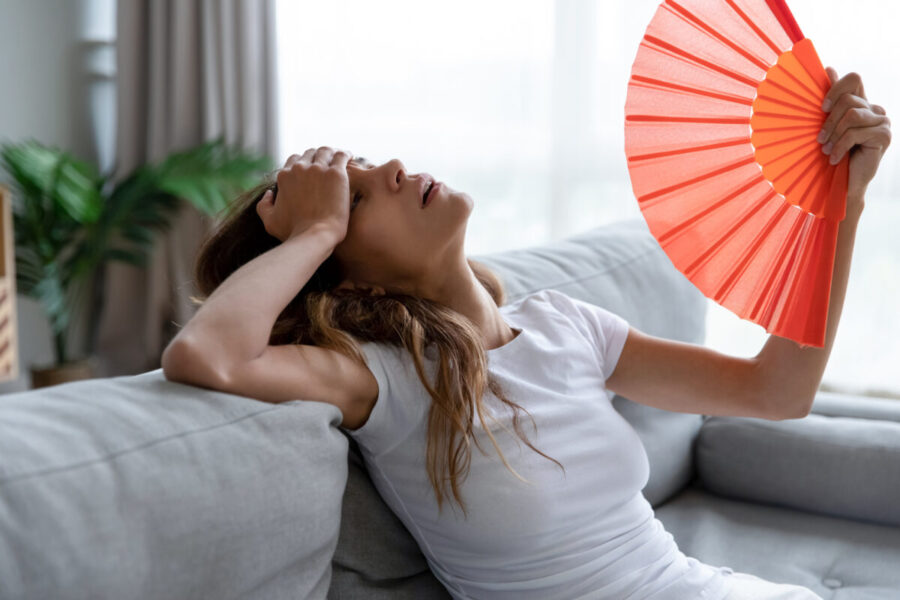During the summer many people are worried about higher energy bills as the air conditioner hums away. It’s understandable when energy costs aren’t getting cheaper. However, there’s a fine line between saving energy at home and putting your health at risk during the hot summer months.
The heat isn’t just an uncomfortable inconvenience. It can be downright dangerous. Unfortunately, heat-related illnesses are a problem that has gotten worse in recent years. It’s important for everyone to understand the risks of overheating at home, who is most at risk and what to watch out for so everyone stays safe this summer.
The Risk of Overheating at Home
When people think about heat-related illness they are usually thinking about someone running around outside or working up a sweat outdoors in the heat. The reality is, the inside of a home can actually get warmer than outside if the air conditioner isn’t on. Warm air gets trapped inside when there’s no air circulation. Adding to the issue is the fact that everything inside the home is generating heat, including the people who live there. This can drive the temperature inside up by as much as 15 degrees.
The misconception about heat-related illness can be a deadly one. Each year there are:
67,512 heat-related emergency room visits.
9,235 people hospitalized for heat-related illnesses.
702 people in the U.S. die from heat-related illness.
When a person’s body overheats it creates a huge amount of stress on vital organs and the circulatory system. The top reasons people die from overheating are:
Heat stroke
Cardiovascular disease complications
Respiratory disease complications
Cerebrovascular disease (blood flow to the brain)
A heat-related illness can come on quickly so you need to know the signs that a person is getting overheated. It happens in three stages:
Heat Cramping – When your body is having difficulty coping with heat you’ll feel heat cramps in your arms, legs and/or abdomen. This is when you need to get inside where it’s climate controlled, get out of the sun and drink cool water.
Heat Exhaustion – If a person can’t cool down the cramping will escalate to heat exhaustion. Heat exhaustion occurs because the body has lost too much salt and water. In addition to cramping, signs of heat exhaustion also include fever of 100.4° F or higher, excessive sweating, headaches, clammy skin, dizziness, nausea and fast, weak pulse.
Heat Stroke – The final stage of heat illness is heat stroke. This life-threatening condition happens when the body can’t control its temperature. A person’s temperature will rise beyond 100.4° F and sweating stops. The body can’t cool down and as a result a person’s temperature can rise to 106° F in just 10 minutes. The extreme heat can cause organ and respiratory failure.
Who’s Most Impacted by the Heat
Anyone can become seriously ill from overheating. However, some people are at a much higher risk of feeling the effects of the heat. Four groups of people that are particularly susceptible to the heat are:
The Elderly
People who are 65 and older should be very careful about overheating. In general, the elderly aren’t as resilient to stressors like heat. Part of the reason is because heat strains the cardiovascular system, which suffers damage as we age. Periods of extreme heat put pressure on the heart, increasing heart rate and the risk of a blood clot.
Pregnant Women
Pregnant women should be particularly careful because heat is dangerous for the mother and unborn child. Heat-related illness has been connected to adverse fetal health and premature birth.
Babies and Young Children
Babies and young children are also at a higher risk of heat-related illness for two reasons. The first reason is heat generation. Children tend to generate more heat with physical activity compared to adults. They also don’t sweat as much as adults. These two factors put young children at a higher risk of overheating.
Immune-Compromised People
Anyone who is immune-compromised or has a preexisting health condition has to be careful about the heat. Your body is already working overtime to deal with the ailment, and the heat could simply be too much stress. In particular, it’s known that people with diabetes are at a higher risk of suffering heat exhaustion or a heat stroke. People with cardiovascular or respiratory problems should also take measures to stay cool to avoid putting themselves at further risk.
Knowing When It’s Time to Turn on the AC
The number one priority is always safety. It’s important to recognize when it’s getting too hot inside and increasing the chance of heat-related illness so that you can take action to cool things down. You know it’s time to turn on the AC if:
The temperature exceeds 80 degrees Fahrenheit. Use your programmable thermostat to keep the temperature at or below 80 degrees automatically, even if you aren’t at home.
You can’t cool down even after taking a cold bath, sitting under the fan, etc.
The CDC’s Heat & Health Tracker projects extreme heat is highly likely.
You feel heat cramps in your arms, legs or abdomen.
Saving a few dollars on your electric bill is never worth risking your health. If you are concerned about your ability to pay higher utility costs in the summer there are resources that can help offset the expense so that you can remain safe at home. There are federal programs like the Low Income Home Energy Assistance Program (LIHEAP) to help seniors and low-income families pay energy bills as well as lower energy consumption. States also have their own assistance programs as do local utilities.
Get more energy saving tips from Major Energy or explore available fixed-rate utility plans that make monthly expenses more predictable!
